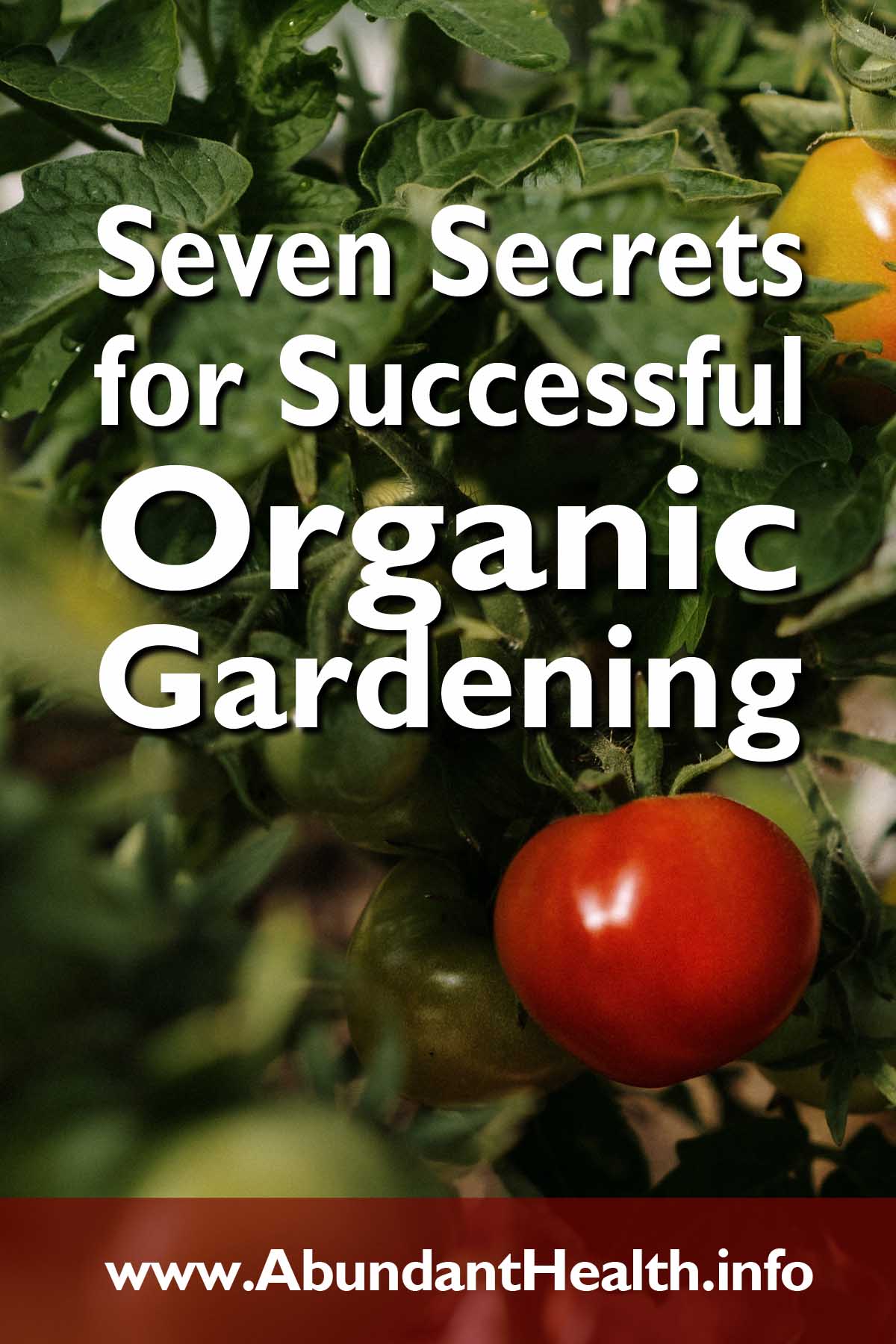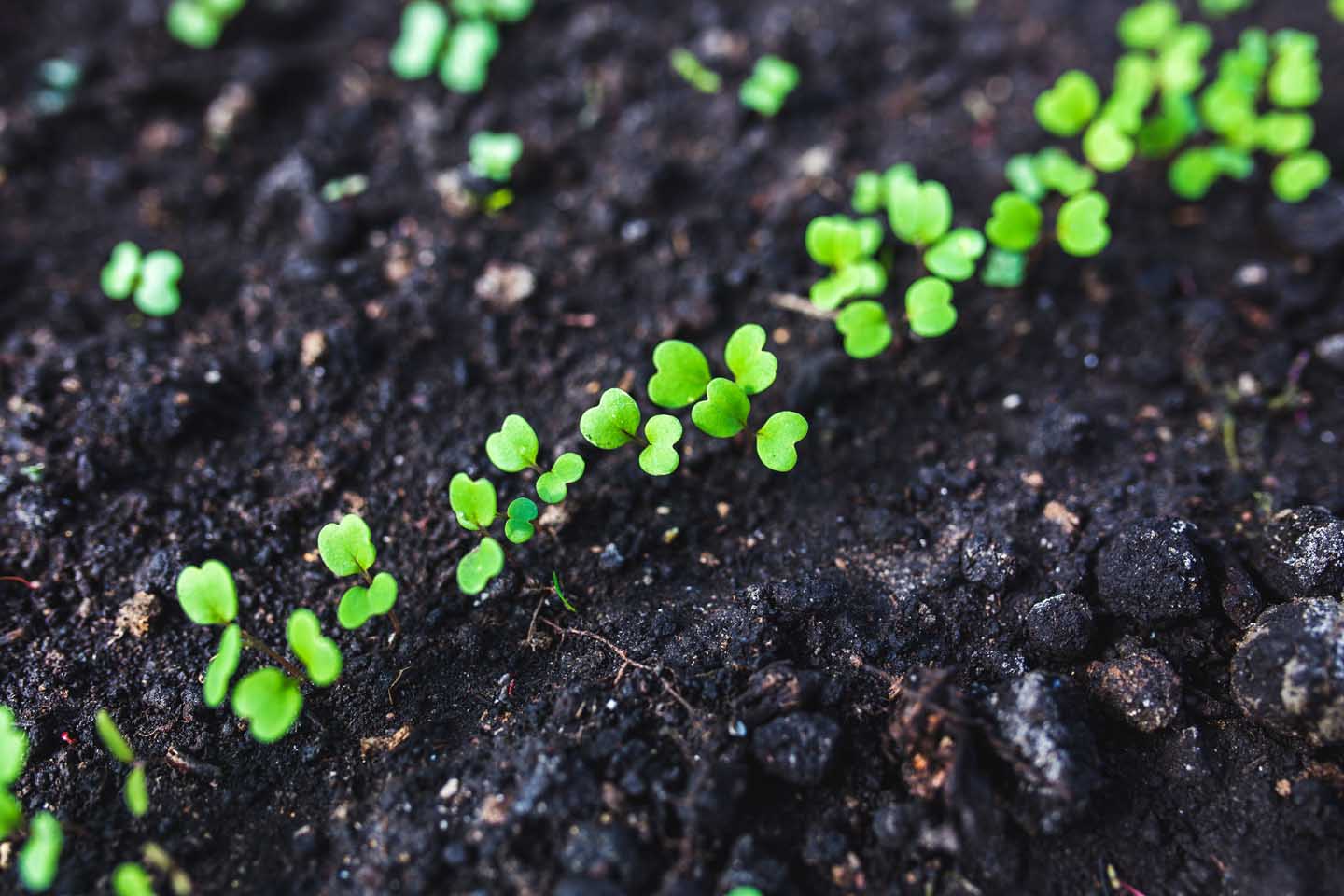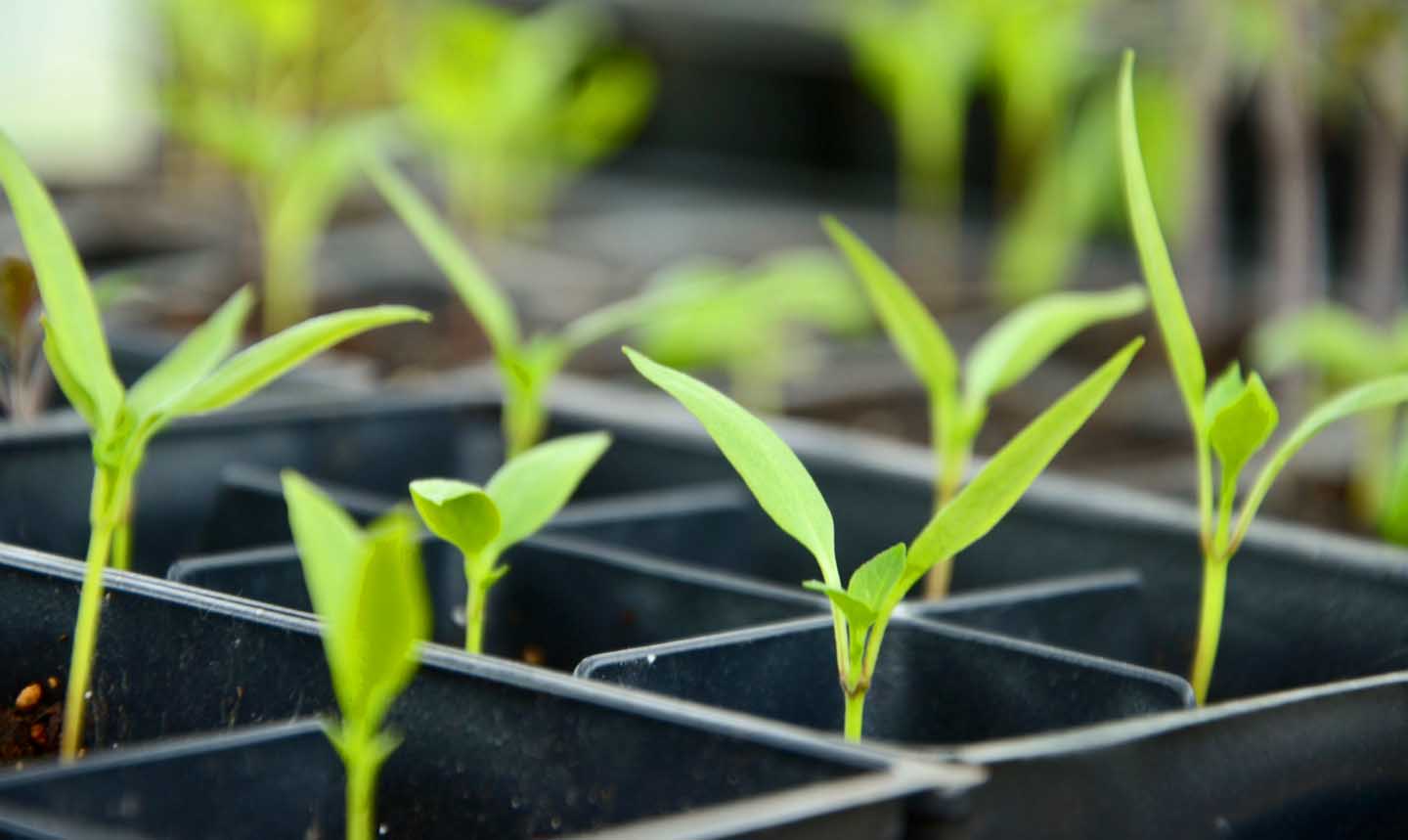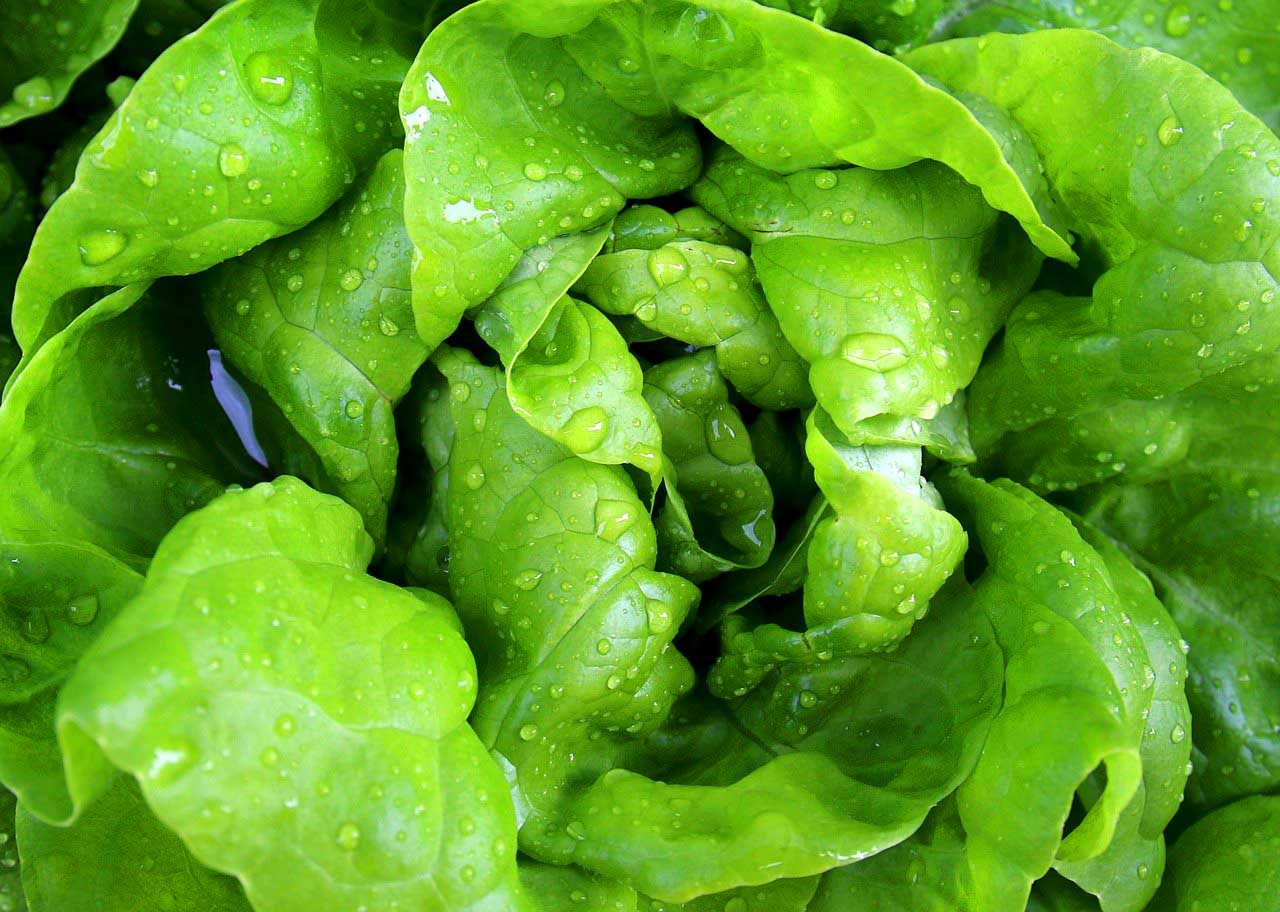There are many compelling reasons for growing an organic garden. Rising food prices, economic uncertainty, environmental stewardship, and health concerns regarding conventional produce are just a few. Then there is the fact that God created man to live and work in a garden (Gen. 2:15). God planned to walk with man in the garden every day! Is there any more compelling reason than that? But there is often a big gap between conviction and reality! Many people don’t have the knowledge or confidence needed to get out into the garden.

The purpose of this article is to give you some practical suggestions for getting started on what we hope will be a lifelong adventure in the garden. The seven secrets we will be looking at are really not secrets at all, just often overlooked or underutilized keys to success. An article of this length cannot begin to do justice to these topics, but hopefully it can stimulate you enough to encourage further study and experimentation.
1) Grow in beds, not rows.
Traditional “row-cropping” makes sense if you are planting and/or cultivating with animals or tractors, but for a home garden you can utilize your space much more efficiently by planting in beds. With beds, there are fewer pathways for weeding, less compaction of soil in your growing area, and greater yields of produce.
We use a 30-inch-wide (80 cm) bed because it is easy to straddle, step, or reach across. The avid gardener and author Eliot Coleman, whose books have inspired a whole new generation of gardeners, has standardized the 30-inch bed-width, and bases all his spacing and amending recommendations on it. He has also designed a number of quality tools suited for this width.
Walking pathways between beds should generally be around usually 12 to 15 inches (30 cm) wide, with NO walking on the beds! Beds can be as long as you need, but 20 feet (7 m) is a nice home-garden length (a standard length makes garden calculations much easier).
We stake out the four corners of our beds with concrete re-bar. Then we slide a piece of PVC pipe over the re-bar to help prevent accidents. Masonry (or builder’s) twine works well to mark the edges of the bed during the bed preparation stage. If your bed area is covered with grass or weeds, a well-sharpened spade can cut around the edges and then be used to skim off the roots and tops (to be used in your compost pile). Or you might prefer to rototill the bed to work in all that good organic matter.
Next, we loosen the soil using a spading fork. Push the fork in as deep as it will go, approximately 12 inches. Try to break up the clods and take out any rocks, but don’t turn over the soil! The goal is to loosen and aerate the soil, while leaving its natural layering intact. Although there are some advantages to “double-digging” or loosening the soil to a depth of two feet deep, there are also some disadvantages—the biggest being the number of people who are discouraged from gardening by trying it! It is hard work, so we recommend that you start by “single-digging,” and you can go deeper later if your time and energy allows. Once the soil is loosened, it can be kept that way by using a wonderfully easy tool called a broadfork once or twice a year.

If you have time and patience, you can let nature improve the soil texture of your beds by covering them with nonglossy newspaper three or four sheets thick, and then adding lots of organic mulch on top. Keep the mulch moist but not soggy and let nature do what it does so well— turning dead plant material into rich humus. Continue to add more mulch as the existing organic matter breaks down. Within a year you will have beautiful, crumbly soil.
Many people ask about raised beds. If you live on solid rock, or you have water drainage issues, raised beds may be your only option. They certainly look nice, if done right, and eliminate the need of bending over so far, but they require much more work and expense. Our recommendation is, don’t use them unless you have to. If you do use them, avoid pressure-treated or creosotetreated wood. Try using rocks, cement blocks, logs, cedar, or plastic lumber instead.
2) Feed the soil, not the plant.
Good nutrition for the soil constitutes one of the major differences between conventional and organic agriculture. Organic agriculture focuses on feeding the microorganisms in the soil the raw materials, rock powders and organic matter that they need to thrive. Beneficial microorganisms then, through amazingly complicated and intricate processes, supply the plant with what it needs when it needs it! Conventional agriculture focuses on feeding the plant certain nutrients, such as nitrogen, phosphorus, and potassium (N-P-K). Often the soil is “treated like dirt.” It is much like the difference between eating whole foods in their natural state vs. taking supplements.
Before knowing what to feed the soil, you need to know its condition. This can be ascertained by getting a good soil test. Take a shovel and make a six-inch (15 cm) deep “V” in your garden soil. Then, using your shovel, scrape a slice of soil off one side of the V. Place this dirt in a clean, plastic bucket. Repeat this process 8 to 10 times randomly around your garden plot. Mix all the samples together in your bucket and then put approximately one pound of soil in a ziplock bag or a bag from the soil laboratory. Send the sample off to a reputable lab.
Once you know the conditions of your soil, you can adjust it accordingly with soil amendments. Here are a few suggestions: If you need nitrogen, which most soils do, add plant meals such as alfalfa, soybean, cottonseed, or cornmeal. You can also use fish or feather meals. If your soil is deficient in phosphorus, soft rock phosphate is usually the best choice to add. Potassium can be supplied from greensand, wood ashes, or organic mined potassium sulfate. Lime provides calcium (and magnesium if it is dolomitic lime) and adjusts the pH. Trace minerals can often be adequately supplied by using kelp meal, alfalfa meal, or azomite, which is a rock powder. Sulfur is another element that may be needed.

Although we recommend using the amendments just mentioned if you are able, never forget that a good quality compost is the best soil balancer. Compost will raise a low pH and lower a high one. It will provide micronutrients as well as most (if not all) of the major nutrients. In fact, Eliot Coleman asserts that compost making is the most important job on an organic farm! With that in mind, let’s talk a little bit more about what is involved in making compost.
Compost Making
Compost results from the breakdown of organic matter. Organic matter is composed largely of carbon and nitrogen sources. This breakdown works best with adequate temperature, moisture, and air, along with a proper carbon/nitrogen ratio. Controlling these five variables leads to high-quality compost.
Think of a compost pile as a lasagna, with alternating layer of noodles (dry, brown, high-carbon ingredients such as straw, corn stalks, and old tomato vines) and sauce (green, high-nitrogen materials like fresh grass clippings, kitchen scraps, and freshly-pulled weeds). Sprinkling dirt on the green ingredients will help to inoculate the pile with beneficial microorganisms that will facilitate the decomposition process. Keep in mind that the proper ratio requires a lot more carbon than nitrogen. Here are some other points to keep in mind for making good compost:
- Straw is the perfect brown ingredient. Being hollow, it supplies plenty of air to the pile.
- The ideal moisture level of the pile should be like a squeezed-out sponge.
- If your pile stinks, is mushy, or attracts flies, remake/ rebuild it with more “noodles”/carbon-dense materials (browns).
- If your pile is not decomposing, it needs more moisture, air, or “sauce” (green material).
- You can jump-start an inactive pile by poking holes in it with a bar and pouring in liquid fish-emulsion or molasses (approximately one-half cup per two gallons of water.)
- The more you turn or aerate your pile, using a pitchfork, the faster it will break down.
- The ideal pile size is approximately four to six-feet (130 – 200 cm) square. If you go bigger than this, you will need to make holes in the center of the pile for air, or else form your pile into a windrow (four to six feet wide and as long as necessary).
- Try making your compost container out of straw bales stacked two high on their sides. After a while, the container will become ingredients for the next pile!
- Keep your pile covered in wet weather to avoid too much moisture.
3) Transplant as much as possible; direct seed as little as possible.
Unless you have had really good weed control in your garden for a number of years, direct seeding is often like throwing your “lambs” (seeds) to the “wolves” (weeds, bugs, etc.)! But there are a few crops that we do recommend for direct seeding:
- Tap-rooted crops, such as carrots and parsnips,
- Low-return-per-square-foot crops such as corn,
- Legumes, including beans and peas,
- Fast-growing crops, such as radishes and arugula, “Baby” crops planted in high density, such as lettuce.
Direct Seeding
Here are a few suggestions for direct-seeding crops:
- Plant into a “stale seedbed” to get a head start on the weeds (see next section for more on this).
- Use string to mark your rows. This makes for easier and earlier cultivation.
- Expect up to 50 percent of your seeds to fail to germinate. So, if you want a plant every four inches, drop a seed every two inches.
- As a general-planting rule, cover seeds to three or four times their diameter. For example, plant a one-fourth-inch diameter pea one inch (2,5 cm) deep. In cool or heavy soils, plant the seeds a little shallower. In warm or dry soils, plant slightly deeper.
- Keep soil moist (not soggy) until germination. This is very important!

Transplanting
Now, let’s look at some of the advantages of transplanting. Eliot Coleman says, “A seed sown in the field is a gamble, but a healthy three-to-four-week-old transplant set out in the field provides an almost certain harvest.” That should be reason enough, but there’s more. When you start seeds as transplants, you have much better control over the factors affecting germination and plant growth, such as temperature, light, moisture, fertility, and others. In addition, transplanting can lengthen your growing season and thus utilize your garden area much more efficiently. For example, when you finish harvesting your springtime carrots, you can have three- or four-week old squash plants ready to plant immediately—effectively adding those three or four weeks to your season!
Additional advantages include giving you a BIG jump on weed control. With transplants, you can be cultivating and weeding immediately, whereas with direct seeding, you may need to wait two or three weeks before your seedlings have emerged. Then, there is no need for thinning and you don’t have large empty spaces where seeds didn’t germinate well. Finally (and obviously), transplanted crops will mature earlier than direct-seeded crops. You can buy transplants, but price, quality, and limited selection and availability are all good reasons to grow your own.

Starting transplants is not difficult. If you follow the suggestions outlined below, you should have success from the start:
- Although there are many different kinds of containers for starting seeds, all of which work, our favorite method is soil blocks, which use no container at all. You can use a metal mold to press out neat little blocks of soil with a hole in the top ready for seeding. Soil block-makers are available from Johnny’s Selected Seeds (www.johnnyseeds.com) and Peaceful Valley Farm Supply (www.groworganic.com).
- We recommend using a peat-based “soilless potting mix.” This ensures less chance of soil-borne diseases killing your seedlings. For small-scale gardening purposes, you can buy a premixed bag at the hardware store or nursery. If you are growing on a larger scale, you might find making your own mix a good option. Here is the very simple recipe that we have been using for years:
- 3 buckets peat moss (Note: 1 “bucket” = 2 gallons / 8 liters)
- 3 buckets high-quality compost
- 1 bucket perlite
- 2 cups fertilizer mix (equal parts soybean meal or other high-nitrogen fertilizer, greensand, and softrock phosphate)
- Transplants can be grown indoors using cheap “shoplight” fluorescent fixtures. You don’t even need special “grow light”-bulbs. Just keep the fluorescent lights as close to the plants as possible, without actually touching them. Raise the lights as the plants grow. Don’t rely solely on a sunny window! Even southfacing windows will produce leggy plants.
- Most seeds germinate best between 70 and 80 degrees Fahrenheit (21 – 26°C).
- Use bottom-heat mats under trays of germinating warmweather crops, such as tomatoes, peppers, and eggplant.
- Only water when the soil is beginning to dry out. Overwatering probably kills more transplants than any other cause!
4) Cultivate; don’t weed.
When organic farmers are surveyed as to what their biggest challenges are, weeds top the list! Let’s allow Eliot Coleman to define our terms: “Cultivation is the shallow stirring of the surface soil in order to cut off small weeds and prevent the appearance of new ones. Weeding takes place after the weeds have already been established.” Another way to state it is that cultivation prevents weeding. If you wait until the garden starts to look weedy, you’ve waited too long! Ideally, the soil should be cultivated (gently stirred) before weeds are even visible. It works this way with character, too! Here are some suggestions to help you win the war on weeds:
- Try the “stale-seedbed” method.
- Prepare your garden bed for planting one week or more ahead of time.
- Water to encourage weed germination.
- Use very shallow cultivation, or better yet, when appropriate, a propane torch to flame the bed just before planting.
- Repeat the watering, germination, and dispatching/cultivation of weeds if you have time. This will eliminate 80 percent or more of your weeds before you even plant!
- Try to work the soil in a way that will not continue to bring up weed seeds from the soil’s weed-seed storehouse. In other words, don’t turn the soil over.
- Ideally, cultivate in the morning on hot, dry days.
- NEVER let weeds go to seed. “One year’s seeding is seven year’s weeding!” If you are unable to keep the weeds under control, use a weed-eater or mower to at least cut them down before their seeds mature.
- Vigorous cover crops, or “smother crops,” sown and tilled at various times of the year will out-compete weeds, and thus decrease their seed count in the soil.
Using the right tools makes cultivation so much more efficient and enjoyable. Our favorites are the collinear and stirrup hoes (both available from Johnny’s Selected Seeds).
5) Cover the soil; don’t leave it bare.
Although we all love the look of a garden with beautiful rows of healthy plants and soft, bare soil in between, it is not natural. All nature is designed to clothe “naked soil.” You will be battling the forces of nature to keep it bare, and sooner or later you will lose! So, why not work with nature to clothe the soil? It will be healthier and you will be happier!
After your initial seeding or transplanting, you will need to cultivate for four or five weeks (at least three cultivations) to help your crop get well-established without weed competition. Then it’s time to cover the soil. Here are some tips:
- Mulch with organic material thick enough to keep weeds from germinating; straw, old hay, chopped leaves, and grass clippings are a few options. This is a great way to build your soil fertility, retain soil moisture, and reduce weed growth all at the same time. There are some downsides, however. In wet or cold weather, mulching can cause problems. It can also be a lot of work and/or money to come up with enough organic material to keep a thick mulch on the soil, since it will continually be breaking down and may need to be reapplied.
- Plant your crops close enough to shade out weeds. If you follow good plant-spacing recommendations, the plant canopy will close and keep all but the hardiest weeds from flourishing. Then all you have to worry about is keeping the walkways clear. Some plants, like sweet potatoes and winter squash, will do a very good job of covering everything—even areas that you don’t want covered!
- Plastic or woven landscape fabric is another option for keeping the soil covered. Again, some disadvantages are involved, such as the cost of materials, the effort required to lay it down and then remove it at the end of the season, and disposal issues, so we only use such coverings when no other option seems to be more effective. For example, it has been our experience that strawberry plants grown in raised, plastic-covered beds do better than by any other method we have tried.
- The most exciting option for weed block that we have found is undersowing cover crops or “green manure” in beds and pathways. If it is done right, you will have beauty, weed suppression, and increased soil fertility—all with very little effort. We are still perfecting this process, but two combinations that have proven successful are the undersowing of your fall cole crops with crimson clover, and undersowing corn with soybeans or cowpeas. Just give your main crop about a four-week head start before undersowing the cover crop.
- Don’t forget to keep the soil covered even when your garden is finished for the season. For example, sow a winter cover crop of grain or legumes. Cover cropping is probably the easiest and best way to build soil fertility. Here are a few of the benefits:
- It is often the easiest and least expensive way to add organic matter to your garden.
- It adds nitrogen and builds humus in the soil.
- It prevents soil erosion.
- It captures plant nutrients that otherwise might leach away.
- It stimulates biological activity in the soil.
- It often works as a biological subsoiler, breaking up hard soils.
- It improves soil structure and drought-resistance.
- And, as already mentioned, it can smother weeds.
- A few tried-and-true cover crops include:
- For winter, cereal rye, wheat, crimson clover, and hairy vetch.
- For summer, cowpeas, soybeans, millet, buckwheat, and sorghum/sudangrass.
6) Be “plant positive” rather than “pest negative.”

The best insect control is a healthy soil that produces healthy plants—just like the best disease prevention in humans is a healthy body. Insect pests are indicators of stressed or unhealthy plants. Don’t “kill the messenger” until you have heard the message. Then, invest in the solution, such as building healthy soil, rather than getting rid of the symptoms, the insects. Although it may sound too simplistic, it really does work! But healthy soil is often not built in a day, so here are a few suggestions for intermediary treatment:
- Learn the life-cycle of insects and outsmart them. For example, in our area Colorado potato beetles are not a problem after July 4th, so we can plant a fall crop of potatoes, beetle-free!
- Use crop rotations to minimize insect and disease issues. Due to space constraints, this article cannot adequately address crop rotation here, but the basic purpose of this useful gardening practice is to try to separate plant families by time and distance.
- Use lightweight floating rowcovers, which serve as physical barriers, to protect young plants.
- Use the organic insecticides dipel or spinosad for worms on brassicas.
- Use insecticidal soap on aphids. But before applying, just try watering a little more. Aphids are attracted to plants that are either water-stressed or nitrogen-rich.
- Try succession plantings of summer squash to keep squash bugs under control. In other words, start some new plants each month until about three months before fall frost.
- Don’t be too hasty in applying insecticide because your plants have a few holes in the leaves! Plants can handle a fair amount of insect damage without their yield being significantly affected.
7) Make gardening a lifestyle rather than an event.

For most gardeners, “putting in a garden” is something you do on one or two nice days in the spring. But, how about making it a way of life? We now grow year round with very simple methods. You can too! Eliot Coleman, who has pioneered awakened interest in year-round growing, lives in Maine! No, we don’t grow tomatoes in the winter or lettuce in the summer, but there are plants suitable for every season! Below are some ideas to get you started on the journey to season extension:
- Use succession plantings to extend your season on both ends. For example: Most tomatoes in our area are set out in late April/early May. But you can plant tomatoes as early as late March by covering them with floating row cover and/or plastic. You can also set out tomatoes as late as the first of July and have fruit until frost.
- Plant less more often. How many zucchini plants do you really need at one time? Planting a few plants each month through July can provide a steady supply of fresh zucchini without being inundated!
- Learn what crops can survive cold weather in your area. Many of the “greens,” such as spinach, kale, and collards, are very winter-hardy. Root crops can often be left in the ground, mulched with straw for protection.
- Use floating row covers draped over wire hoops. You will be amazed at how much protection such a flimsy fabric provides!
- For overwintering crops, you can make simple “low tunnels” with galvanized conduit (see Johnny’s Selected Seed catalog for details). Put row-cover and/ or plastic over the tunnels for growing produce all winter long! Hold covers down with sand bags.
- By eating with the seasons, you will find you don’t need to do as much canning. Why eat from a can when you can eat straight from your garden?!
Well, the seven “secrets” are now “out of the bag.” We have covered a lot of information in this article and you are probably feeling either energized or overwhelmed! But don’t despair—start where you are! Then make improvements as time and money allow. Plants can handle an amazing amount of abuse and still produce beautiful fruit! So, get up, go outside, and walk with God in the garden!
This article was published originally in the Journal of Health and Healing, a publication of Wildwood Institute.
Some news! Paul and Edwin Dysinger have launched the development of a revolutionary app called Seedtime. It makes all the gardening planning extremely easy, plus it will give you instructions on how to do your organic garden on every step. If you wish, you can get access to the famous Born to Grow Gardening Library as well.

John Dysinger, along with his family and his brother Edwin and family, work, play, and minister at Bountiful Blessings Farm, Williamsport, Tennessee.
Leave a Reply